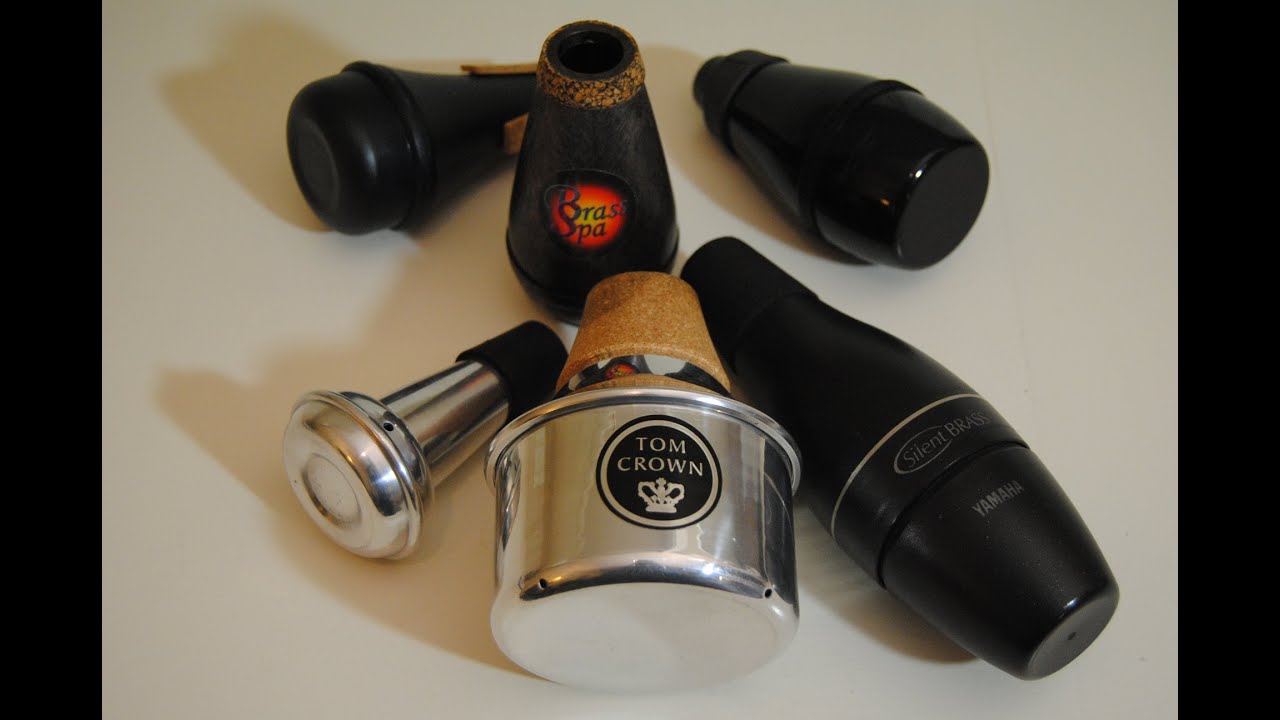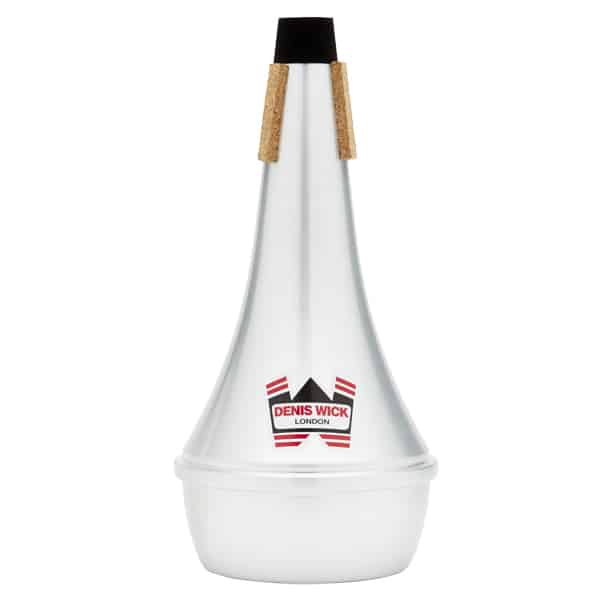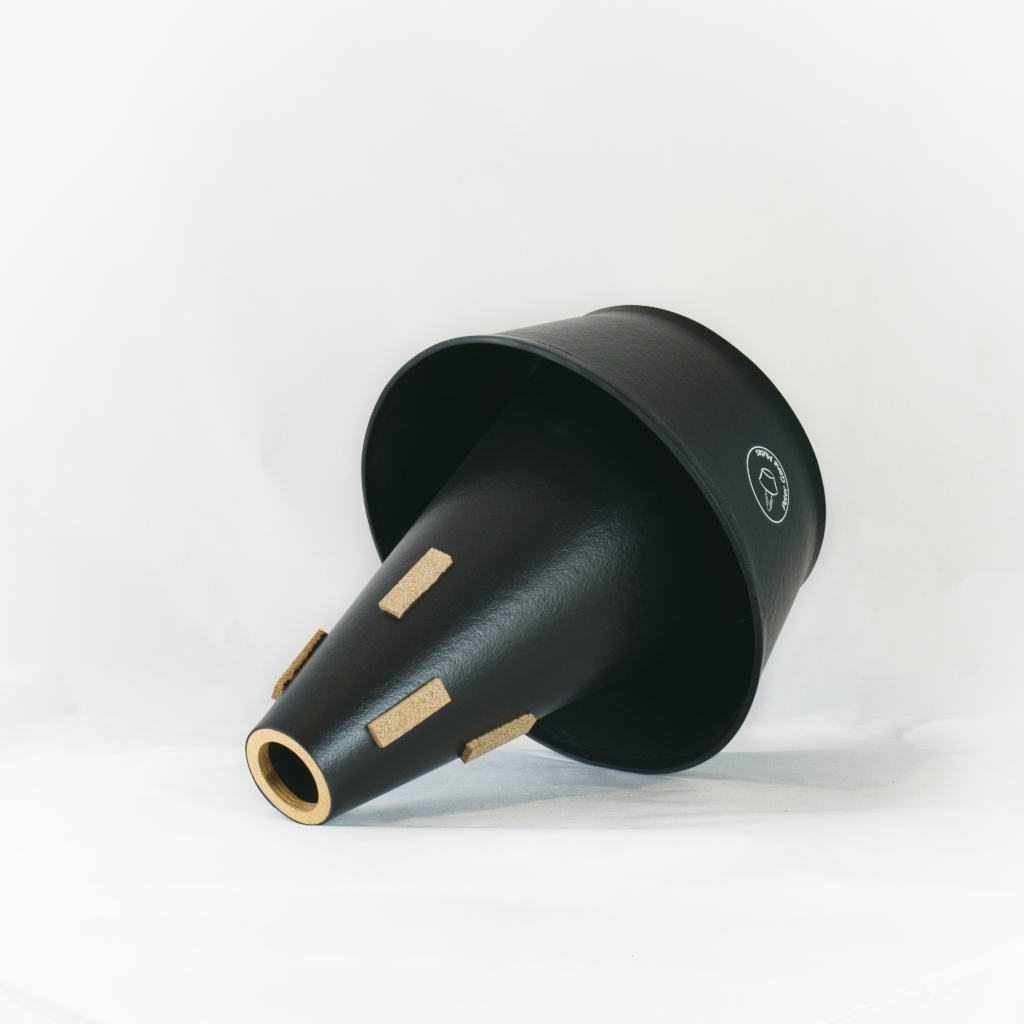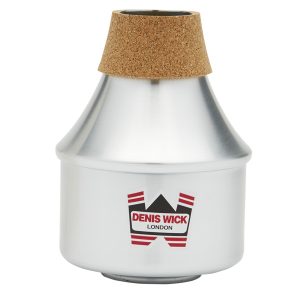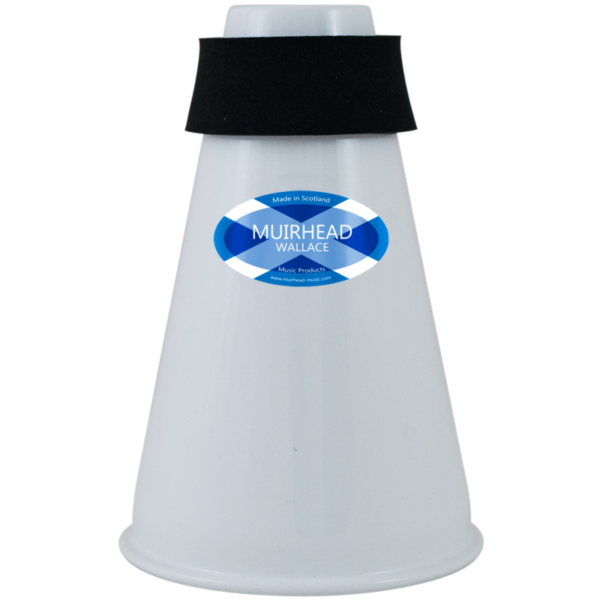Following on from last weeks blog on mouthpieces I thought that an explanation of the vast range of brass mutes might be of interest.
There are lots of different mutes out there, but there are four that are of particular importance to brass players. They are straight mutes, cup mutes, Harmon mutes and practice mutes.
The most important of these is arguably the straight mute, used in all genres of music and is basically a tapered cylindrical mute held into the instrument by corks. If a piece of music calls for just “muted” or “con sordini” then this is the one that is normally used. You won’t be surprised though that there are several different versions, metal, fibre or wooden made by different manufacturers. Denis Wick and Wallace make a range of metal mutes, the latter in some funky colours, others like Tom Crown and Vaccianno also make a range of metal mutes. Sometimes a composer might specify a fibre mute, these are normally Humes and Berg and are made of vulcanised fibre with a lining of stone, although Peter Gane mutes are similar and also suitable for this purpose. They have a softer sound than a metal mute which gives a more metallic and harsher sound, but a composer will normally specify if they want a particular mute to be used. There are also some wooden straight mutes, Denis Wick make them, but they are a much more specialised sound and not normally required for everyday use.
The second indispensable mute is the cup mute. This is a mute that has a shape much like a straight mute but has a cup shaped cowl at the front. This softens the sound and gives a warmer rounder sound, often used for quiet passages where a warm quiet sound is required. They are mostly metal, although Humes and Berg and Peter Gane do make a fibre version, and the cup is often adjustable to accommodate different instrument manufacturers and to offer a wider range of sounds. Denis Wick, Wallace, Tom Crown, Vacchiano amongst others all offer metal cup mutes.
Harmon mutes are probably the most versatile mute in the brass player’s range. Harmon mutes are generally metal and have a removeable plunger which can also be moved in and out to alter the sound. A Harmon mute can be played with or without the plunger, or with the plunger pushed in or out as required. All of these options offer a slightly different sound and are used mainly in Jazz work where some interesting sound combinations can be created, but they are also used occasionally in brass band music to offer a different sound.
These three mutes are the most commonly used but there is also one other that should be in the indispensable category and that is the practice mute. Practice mutes are a different animal to the other mutes and serve a different purpose. Those discussed so far are in the business of changing the sound to offer different timbres for the same instrument, but practice mutes are designed primarily to restrict the air that can go through the instrument. Denis Wick, Wallace, Bremner and others all make practice mutes and they tend to be bought to be able to play quietly and not disturb others. I have heard that professionals on tour will use them in hotel rooms to save annoying their neighbours for example. They all perform this function well, but they have another more significant purpose and that is to improve the air flow. Without going too far into the mechanics of playing a brass instrument, air is the fuel and if the air can be effectively controlled then that is 80% (my figure without any scientific basis) of the way to being a good brass player. The fact that these mutes restrict the air means that they will force the player to blow harder and if they can get into that habit then their all-round playing will improve. The Wallace mutes incidentally have some adjustment which means that the back pressure can be adjusted as can tuning. So these mutes are great for warming up or just generally to improve the air flow and should be a dispensable item in the brass players toolkit.
Finally, I would like to mention, amongst other things, bucket mutes, a large round mute filled with cotton or similar fabric which deadens the sound and gives a soft warm tone, leading to its alternative name of soft tone or velvet tone mute. In the past the Humes and Berg mutes were the standard but they have three clips which attach to the bell, which is ok if you have time to get the mute onto the bell, particularly with the trombone version, but I have spent precious time trying to remove this mute in a hurry, its’ quite hilarious! It is quite cumbersome and impossible if it needs to be fitted or removed quickly, but Peter Gane have come up with a good solution. Their bucket mute is like a cup mute filled with a wadding to dampen the sound in the same way that the Humes and Berg version does. Where it gains though is that it clamps inside the bell in the same way that a cup mute does so makes it much easier to get in and out.
All the mutes we have discussed are primarily used by trumpet, cornet and trombone players. Mutes are also available for upward pointing instruments, euphoniums, baritones, horns and tubas, but their use is very rare and tends to be limited to test pieces so are probably best owned by a band than by individuals. The only type that would be of any benefit to an individual player on these instruments is the practice mute for reasons outlined above, although some of the shapes are quite interesting.
So to recap, although there is a huge choice of mutes available there are really only four that should interest your average player, straight, cup, Harmon (particularly for Jazz) and practice, the latter also being used to improve the blowing technique as well as keep the neighbours happy. But mutes are an essential tool for creating a sound world and composers are very keen to make use of this to get the sound or mood they are looking for. Even though, the musical world would be a lot less colourful without them.



